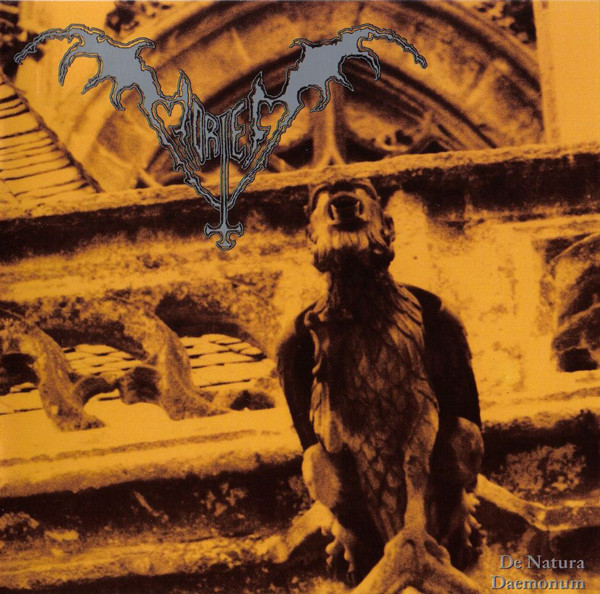
Mortem hails from Peru and needs no introduction. The cataleptic, rhythm-driven songwriting makes De Natura Daemonum a strong sonic bastion in the band’s repertoire.
3 CommentsTags: death metal, fernan nebiros, mortem, Speed Metal

Mortem hails from Peru and needs no introduction. The cataleptic, rhythm-driven songwriting makes De Natura Daemonum a strong sonic bastion in the band’s repertoire.
3 CommentsTags: death metal, fernan nebiros, mortem, Speed Metal
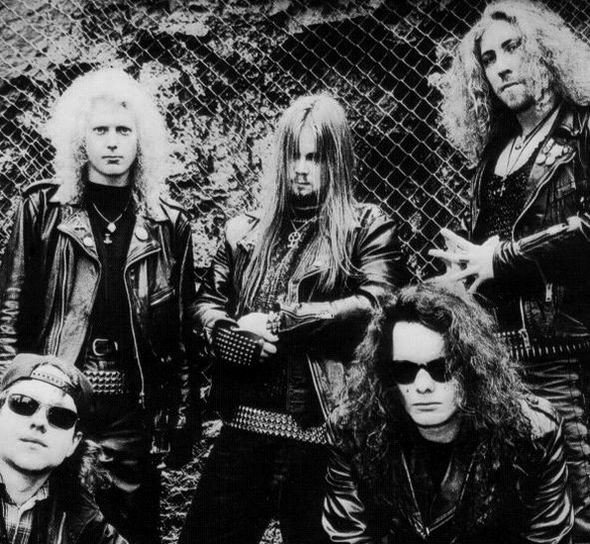
Afflicted were a Swedish metal band from the late 80’s to the mid 90’s releasing only two albums and a handful of demos. They began as Afflicted Convulsion playing primitive yet erratic death metal/grindcore. Although the riffs on their earliest (listenable) demo, Beyond Redemption, do little to set themselves apart from their contemporaries, we are presented with nuanced compositions that keep the listener enticed through each track, presenting satisfying wholes rather than myopic moments of inspiration. As Afflicted, the band would take their compositional skills and apply them to unique riffs on their demos and first album, Prodigal Sun. (more…)
17 CommentsTags: afflicted, beyond redemption, death metal, Grindcore, Hardcore, power metal, prodigal sun, Speed Metal, Sweden
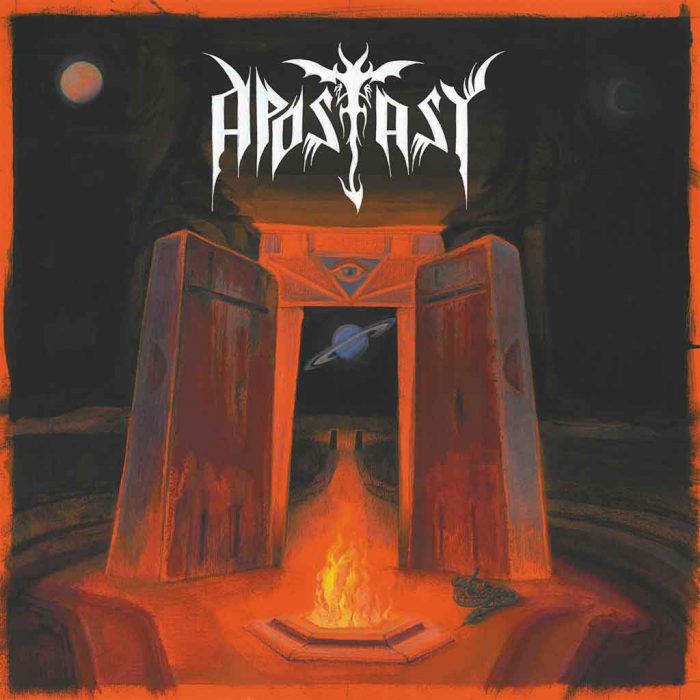
Hailing from Chile, speed metal band Apostasy returns in 2018 with a release that shows the blossoming of ideas developed during the last decade. Rooted in the genre stylings of the end of the eighties and beginning the nineties, Apostasy manages to sound fresh in The Sign of Darkness. (more…)
1 CommentTags: 2018, apostasy, death black metal, fallen temple records, Speed Metal, the sign of darkness
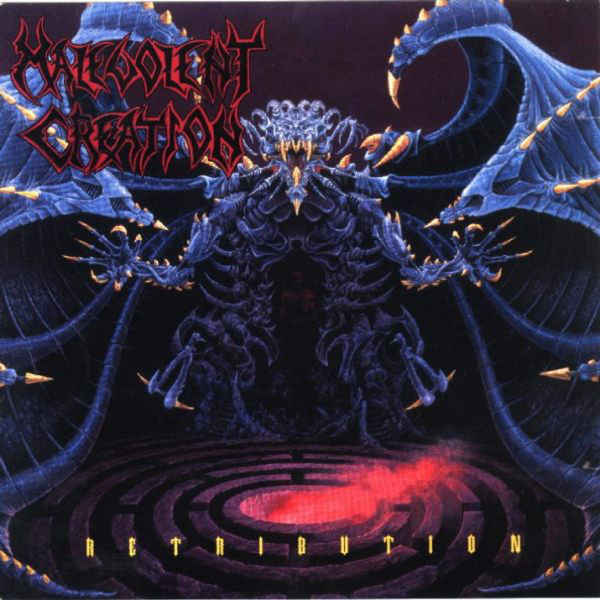
Malevolent Creation have never reached the relative popularity of their Floridian peers, and neither have they received the same degree of recognition. The band members moved from New York in order to follow their dreams of metal stardom, yet they never saw even a quarter of the admiration that Cannibal Corpse and their brand of deficient death metal received. For a short while Malevolent Creation were a band displayed unlimited potential within their percussive style combined with primitive caveman-esque melodies, but they never reached the summits of Deicide, Morbid Angel, Obituary and Monstrosity. The band would eventually fade away due to constantly changing members, drug related stories and the inability to build upon previous works.
(more…)
Tags: death metal, effigy of the forgotten, Malevolent Creation, retribution, Speed Metal, suffocation
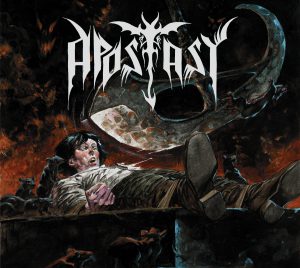
Rising from the pit of late nineties underground speed metal, Chileans Apostasy revived during the last decade to bring back to life a pure demonstration of metal as it is. There is no need to claim to be progressive, harsh, technical or the milliard other epithets that bands and marketing agents have come up to single out bands which present only narrow facets of what the genre can be. We can hear traces of what came to be known as the ‘riff salad,’, but like later death metal outgrowths of the style, there is a sense of organic flow and revolving around a main riff-idea. (more…)
3 CommentsTags: apostasy, chile, Speed Metal, the blade of hell
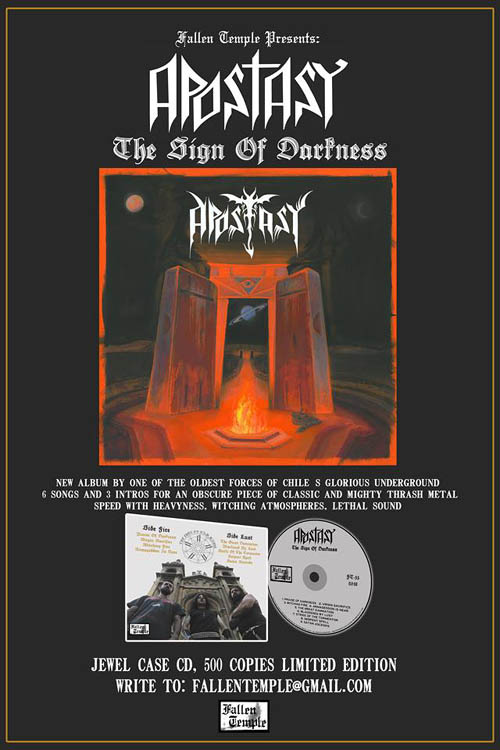
Chilean speed metal trio Apostasy has released their new album The Sign of Darkness via Fallen Temple. After releasing two demos in the late eighties and early nineties, followed by a compilation in 2013, Apostasy started releasing demos in 2014. The new demos contain old and new material, with the album presenting the band’s fully developed voice.
(more…)
Tags: apostasy, chile, Speed Metal, the sign of darkness

A footnote in an article we ran last week sparked a lot of controversy among our very passionate friends who lurk the DMU comment sections. No, it wasn’t that we correctly identified SJW journalists as the nail in the coffin of metal as we know it; instead it was an observation of the last death of heavy metal:
In the early 1970s, heavy metal was an exciting new musical and cultural movement. So much so, that it surpassed even rock music (thought to be revolutionary just a few years before). But towards the end of the decade came a near-lethal blow: punk rock. Faster, louder, more abrasive and aggressive, punk had risen the bar and metal couldn’t compete. From 1977-1983, metal was almost completely obliterated. Many had declared the movement dead – a fleeting flavor of the week experiment that did not stand the test of time.
Many took issue with this: “metal wasn’t dead!” they cried. “Albums were released, things happened!” “You’re erasing history Brock, your articles ruined this site and my life!”
The intrigue and utter distraction of this phrase sparked the need to further elaborate: Did metal actually die, during this time period, or did I somehow just miss a few years of quality metal development?
7 CommentsTags: 1983, death, metal history, NWOBHM, punk, Speed Metal, the second age of metal
Every June 6 we celebrate a day sacred to all Hessians: the International Day of Slayer on which all metalheads celebrate what it is to be a metalhead, as exemplified by the music of Slayer and the lives of its musicians, including Jeff Hanneman (1964-2013).
Slayer beats back the world of human intentions which tries to make life safe, inoffensive, commerce-friendly, popular, and full of unique precious snowflakes. Its music affirms reality, which operates through power and will, over emotions and social opinions. It denies the importance of humans.
No doubt you know how to celebrate this holiday for metal folk worldwide, but as a quick refresher:
On June 6th, Hessians worldwide come together to do something upon which we can all agree – listening to Slayer! Finally, one of the most dismissed cultural groups in the world has a holiday to call its own. Join us in our cause to stand unified in our celebration of metal music and let us prove to the rest of society that we too have a voice.
Who is Slayer
Slayer is a band from California. Their music has come to epitomize Satanic speed metal music in the latter half of the 20th century. Their 1986 album Reign in Blood ranks as one of the single most influential metal albums of all time, typified by the modern classic “Angel of Death.”
How to Celebrate
- Listen to Slayer at full blast in your car.
- Listen to Slayer at full blast in your home.
- Listen to Slayer at full blast at your place of employment.
- Listen to Slayer at full blast in any public place you prefer.
DO NOT use headphones! The objective of this day is for everyone within earshot to understand that it is the National Day of Slayer. National holidays in America aren’t just about celebrating; they’re about forcing it upon non-participants.
Taking that participation to a problematic level
- Stage a “Slay-out.” Don’t go to work. Listen to Slayer.
- Have a huge block party that clogs up a street in your neighborhood. Blast Slayer albums all evening. Get police cruisers and helicopters on the scene. Finish with a full-scale riot.
- Spray paint Slayer logos on churches, synagogues, or cemeteries.
- Play Slayer covers with your own band (since 99% of your riffs are stolen from Slayer anyway).
- Kill the neighbor’s dog and blame it on Slayer.
In honor of Slayer, of metal music worldwide in all ages, and of the spirit of facing reality with eyes wide open and embracing the opportunity of challenge and fear, we intend to keep this website open and celebrate the International Day of Slayer every year on June 6. Join us… welcome back!
Join us in celebrating the International Day of Slayer for 2018! This year, we offer Live in Reseda, a bootleg (courtesy of Melonville HC) from the glory days of classic Slayer as they were just starting their quest for world domination.
Nuclear Blast Records invoked the celebration with a sale on classic Slayer material (check the vinyls) and a video commemorating the event:
If you are here by mistake and wondering why Slayer (you’re supposed to yell this each time you say it, like this: SLAYER!) is important, check out the Heavy Metal Frequently Asked Questions file to see how this band influenced the rise of death metal and, well, basically everything else. SLAYER!
To aid in your celebration, enjoy some links to classic Slayer releases:
Show No Mercy (1983)
Haunting the Chapel (1984)
Hell Awaits (1985)
Reign in Blood (1986)
https://www.youtube.com/watch?v=gC6VOlEIVpY
South of Heaven (1988)
https://www.youtube.com/watch?v=eh1e-vduL7g&list=PLqytfNFx9Ghzbexe7KMnUzuhjPaYoAMlF
Also consider other Slayer bootlegs like Captor of Sin, Aggressive Perfector, and Obscure and Obscene to keep your eternally damned dark soul raging!
4 CommentsTags: death metal, evil, international day of slayer, jeff hanneman, national day of prayer, National Day of Slayer, slayer, Speed Metal

Control Denied was formed in the mid-1990s by late Death-frontman Chuck Schuldiner to cater to his desire to explore more traditional metal stylings. Schuldiner, however, was still bound to Death’s contract with Nuclear Blast and thus agreed to record one more album under the Death-moniker before concentrating fully on his new band and musical direction. As a result, songs originally intended for Control Denied were shoe-horned into a death metal context on The Sound of Perseverance (1998) which partly explains the lackluster, two-faced nature of the last and arguably worst Death-album. With contractual entanglements finally sorted out, Control Denied’s debut The Fragile Art of Existence saw the light of day in 1999.
(more…)
Tags: Control Denied, death, death metal, fates warning, Heavy Metal, iced earth, jag panzer, Nevermore, power metal, progressive metal, Speed Metal, steel prophet, Vicious Rumors
Listen to a track from the upcoming Hadeon from longstanding Dutch band Pestilence, one is immediately struck by the similarity to late-1990s Morbid Angel: the riffs are there, albeit a bit impatient and tightly circular, but the whole experience is not. What is missing? To understand this, we must go to the core of what made death metal what it is.
If you wanted to explain to a normal person what death metal is, looking at the core of its spirit, you might haul out Slayer Hell Awaits, Hellhammer Apocalyptic Raids, and Bathory The Return… because these influenced the techniques, composition, and spirit of death metal. From Hellhammer and Slayer, it got its song structure and aesthetics; from Bathory its themes and riff technique.
Death metal took the original idea of metal, formed when Black Sabbath and others began using power chords to make phrasal riffs instead of harmony-oriented open chord riffs, and developed it further. This is different than doing something “new” or “progressing” because it means undertaking the much harder task of developing an idea further at a structural level instead of just changing aesthetics.
With the rise of underground metal, death metal adopted chromatic riffing and made the interplay between riffs form a narrative to each song. This abolished typical rock song structure and, because the guitar served as a melodic instrument instead of a harmonic one, forced vocals, bass and drums into a background role. How well the riffs fit together and portrayed an atmosphere, idea, or sensation defined the quality of the music.
Pestilence came from a solid death metal background with Consuming Impulse but showed a speed metal styled approach on Malleus Maleficarum, and this tension has stayed with the band for its entire career. The speed metal style of verse and chorus built on a singular theme that is present in the music is easier to jam on and use harmony to complement, where death metal rarely explicitly states its theme, only silhouetting it in the interaction between its many riffs. With speed metal, bands can set up a chord progression and develop it in layers of internal commentary like jazz, and this puts vocals back in position number one among the lead instruments.
“Non-Physical Existent” is a two-riff song with both based on the same note progression. It creates its intensity through the clash between a ripping circular high speed riff and a slower chromatic riff that uses odd harmony to distinguish notes in an otherwise linear theme. The song breaks into a solo section over one of the riffs, and has a type of turnaround the drops into the faster riff as a return. But there is no real interplay nor any narrative.
From the riffs themselves, this is a good song, but unfortunately, it is not death metal. Nor will it last because essentially it is a closed-circuit video of itself, a riff commented on by another, without resembling any particular experience or emotion, therefore being a null journey, more like stasis in space while riffs loop. It is better than not bad, but still not of real interest to the death metal fan.
22 CommentsTags: death metal, jazz, pestilence, sodomy, Speed Metal